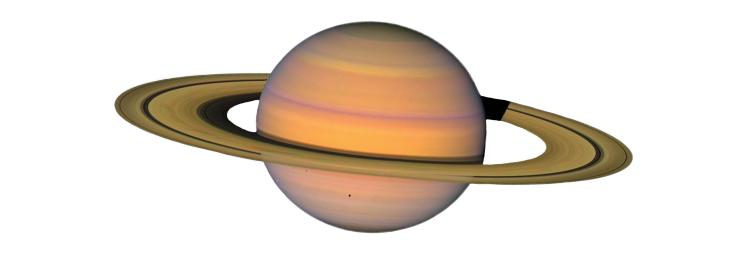Cassini's swan song
An artist's concept of Cassini during the Saturn orbit insertion. (NASA)

An artist's concept of Saturn. (NASA)
It was a bittersweet ending for some CU Boulder scientists and students. NASA’s Cassini spacecraft made one last dive toward Saturn, breaking up like a meteor in its crushing atmosphere in September. Its fuel ran out after 13 years of orbiting the gaseous planet and toting a $12 million instrument called the UltraViolet Imaging Spectrograph (UVIS) built by the Laboratory for Atmospheric and Space Physics (LASP).
The Cassini spacecraft fostered scores of dazzling discoveries, including a number by the UVIS team that charted Saturn’s atmosphere, rings and moons from virtually every angle. Cassini observations indicated the rings likely formed around the time the solar system assembled itself 4.6 billion years ago, says Professor Larry Esposito, principal investigator on UVIS.
Another CU Boulder discovery with UVIS was the detection of microscopic grains of dust near Saturn, implying hydrothermal geysers are emanating from a salty ocean beneath the surface of the moon Enceladus—a sea that could potentially harbor life. Thanks for the memories, Cassini.
Principal Investigator:
Larry Esposito
Funding:
National Aeronautics and Space Administration (NASA)
Collaboration/Support:
Astrophysical and Planetary Sciences; Laboratory for Atmospheric and Space Physics (LASP)

